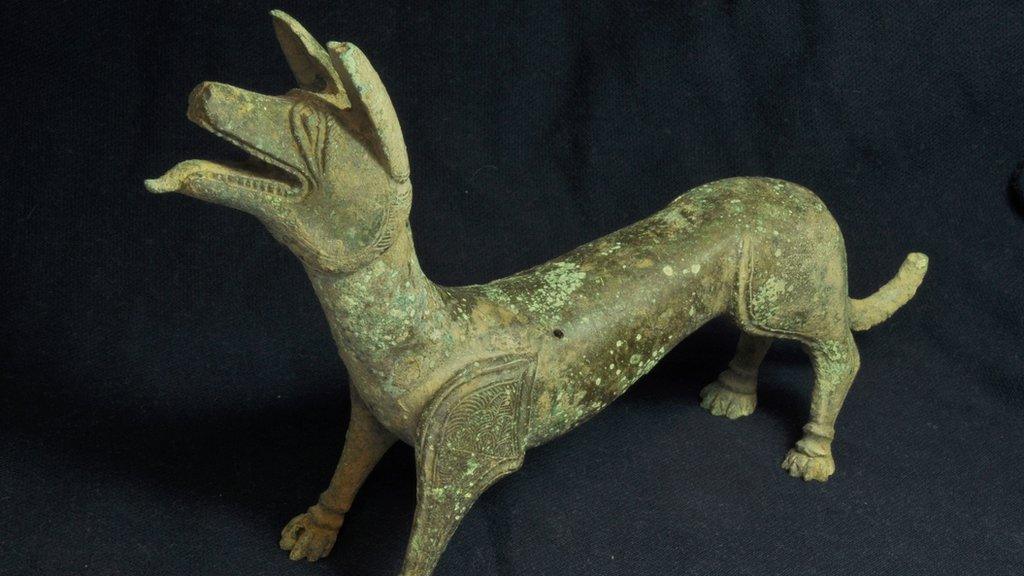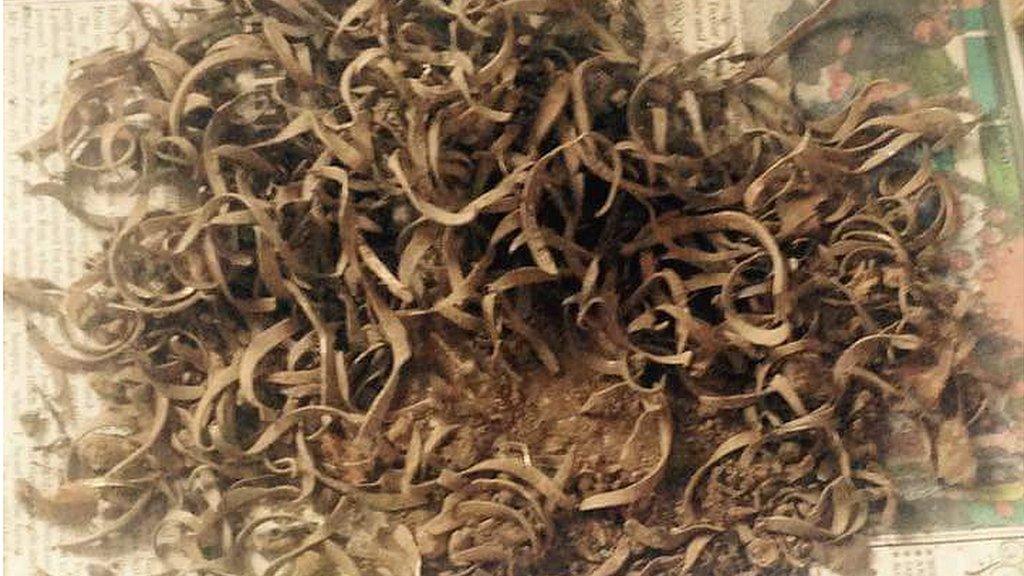Gloucestershire Roman artefacts found by metal detectorists
- Published

The "licking dog" is an example of a healing statue thought to be linked to a Roman temple at Lydney
A sculpture of a licking dog has been unearthed in Gloucestershire - and described by experts as a first in British history.
The dog, along with a hoard of Roman bronze artefacts, was discovered by metal detectorists Pete Cresswell and his brother-in-law Andrew Boughton.
The county's liaison officer said the "finely detailed" statue was a "unique find for British archaeology".
It is a healing statue thought to be linked to a Roman temple at Lydney.
"Great privilege"
The bronze dog with its tongue out was the only artefact intact in the hoard.
It is thought the other items were deliberately broken and stashed by a metal worker, who intended to melt and re-cast them at a later date.
Archaeologist Kurt Adams, Gloucestershire and Avon finds liaison officer, said: "This Roman hoard dates to the 4th century and mostly contains items that have been deliberately broken, ranging from small vessel fittings to a large bronze statue.
"Most amazing of all is a complete and finely detailed standing dog statue, which is a unique find for British archaeology."
The discovery is being held at Bristol Museum where it is being photographed and catalogued on an online database.
Detectorist, Mr Cresswell said it was a "great privilege" to be able to contribute to local and British history.
'Historical significance'
"It's not every day you come across a hoard of Roman bronze," he said.
"We have been metal detecting for a combined 40 years, but this is a once-in-a-lifetime discovery.
"As soon as I realised the items were of historical significance I contacted the local archaeology team, who were equally excited by the find."
The exact location of the discovery has not been disclosed.
- Published18 November 2015
